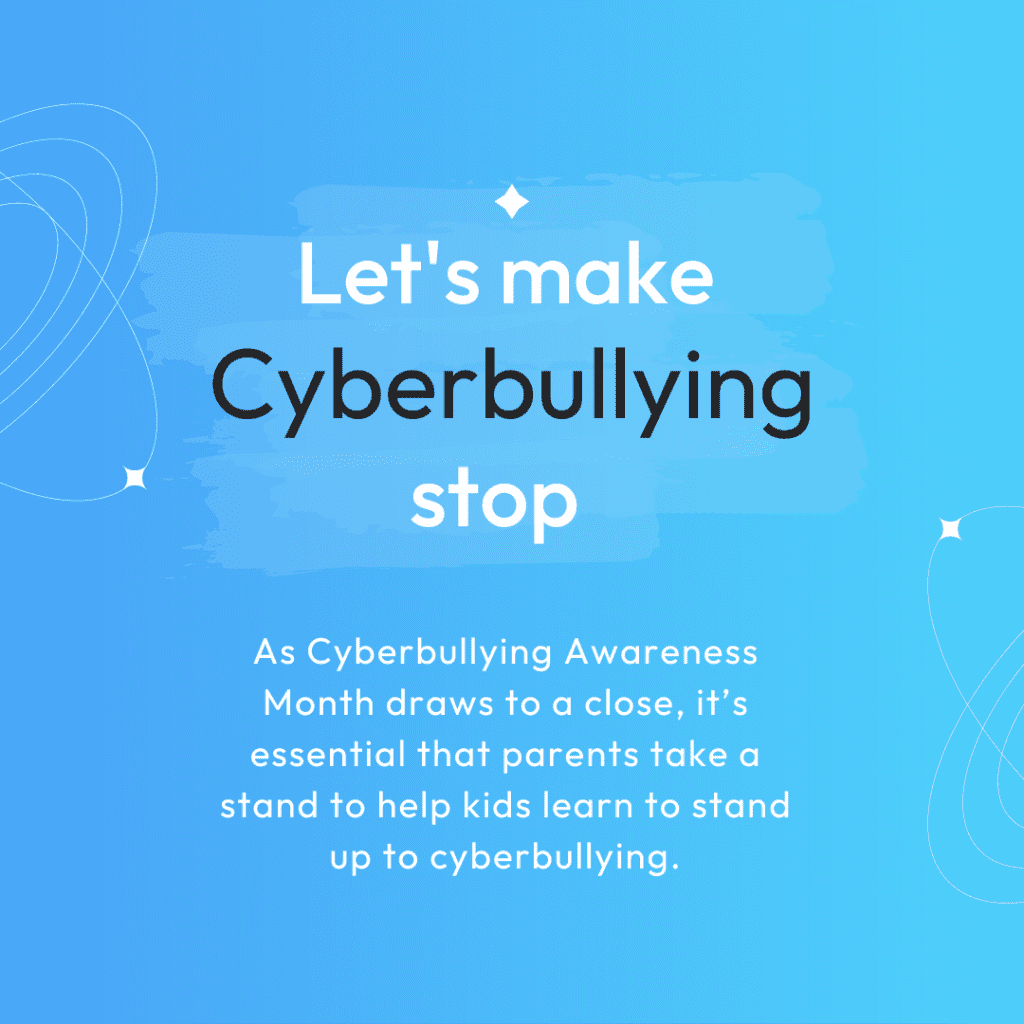As Cyberbullying Awareness Month 2022 draws to a close, it’s essential that parents take a stand to help kids learn to stand up to cyberbullying.
I’ve spent the last three weeks writing about and researching cyberbullying. I’ve read countless reports and sifted through dozens of websites. I’ve looked at resources and programs available to parents and caregivers as well as to kids. I’ve even written about fun online games kids can play for free that help them understand the importance of digital citizenship. Cyberbullying it a huge concern for today’s kids, and because many parents today (like myself) didn’t grow up navigating the Internet and smartphones at the same rate today’s kids do, we don’t necessarily understand, from a firsthand perspective, just how alarming the trend of cyberbullying actually is.

Cyberbullying Needs To Be Stopped…even after Cyberbullying Awareness Month Ends
So, to close out Cyberbullying Awareness Month 2022, I thought I would bring the facts. I want to bring the numbers and statistics surrounding cyberbullying to the front of your mind. Not to scare you, but to inform you. Because knowledge is power. And today’s kids need us.
Whenever I think cyberbullying, I can’t help but recall the story of Phoebe Prince, who was being harassed online while my kids were still in diapers but whose story has haunted my dreams as I navigate the world of smartphones, social media and digital everything with my own now-teenaged daughter. While Phoebe Prince’s story is a tragic one that ended in suicide after months of bullying, it has shone an international spotlight on the problem with cyberbullying in schools. Her story reminds us that words have power and kids can be ruthless and mean and that we, as parents, teachers, caregivers and community leaders, need to do better for our children.
Facts and stats about Cyberbullying and Today’s Youth
- Social media sites are undeniably great tools. They help us share milestones with friends near and far, recommend places and products in our feed and discover events happening near and far. But, as I’m sure you know, social media, especially for kids, isn’t all sunshine and rainbows. According to DoSomething.org, Instagram is the social media site where most teenage users report experiencing cyberbullying. Another article from Security.org alleges that YouTube is the site where bullying happens. Either way, if you allow your kids to use social media, be sure you monitor what your child is doing on those platforms, especially the private messages feature.
- Gender plays a role. According to Enough.org, girls are more likely to be victims of cyberbullying that boys. Girls are often more likely to be cyberbullies. Enough.org claims that this trend is due, in part, to the fact that girls generally go online to use social media whereas many boys logon to play video games. Pew Research states that girls are more likely to experience someone spreading false rumors about them online and are also more likely to receive explicit photos they don’t wish to receive. LGBTQ+ youth experience higher rates of online harassment that their heterosexual peers.
- Kids are perceptive. No matter how much we strive to make school an equal playing ground for kids, they inherently see and feel the differences that separate them. According to the National Center for Education Statistics, bullies are often perceived to be of higher social standing and better of socioeconomically than the peers they choose to pick on. Size often plays a role, too, with bullies tending to find someone physically smaller than themselves to pick on. This same study says that white students are most likely to bully and be bullies.
I could go on and on and bore you with statistic after statistic about cyberbullying. Some are alarming, others are fairly predictable and there is a wide range of everything in between. The fact is that we need to take action and it needs to happen now. Talk to your kids. Monitor their phones, their social media accounts, their friends. Make sure they know what cyberbullying is and what to do if they experience or if a friend experiences it. Change starts at home.